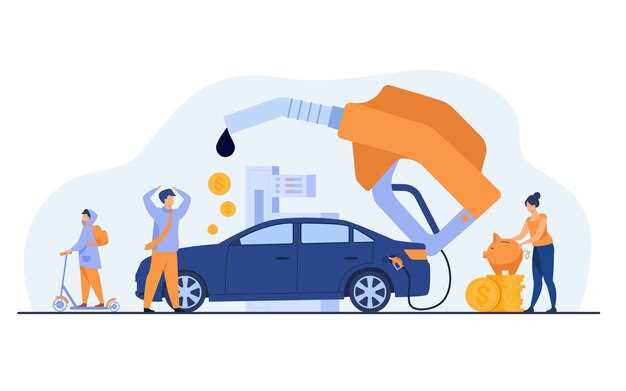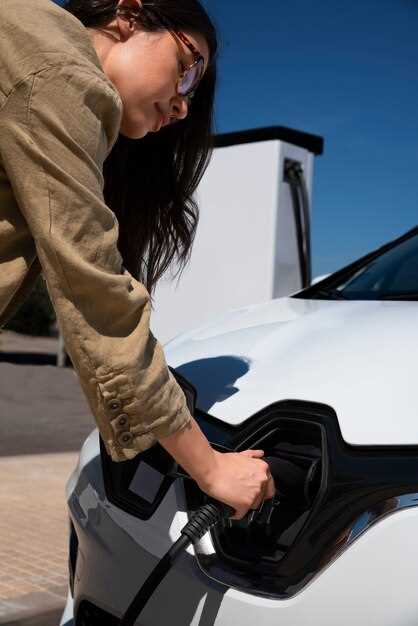
The driving experience has evolved significantly over the past decade, particularly with the rise of electric vehicles (EVs) alongside traditional gas-powered cars. As consumers increasingly weigh their options, understanding the nuances of these two distinct types of vehicles becomes essential for making informed decisions. While both EVs and gas cars offer unique advantages, the driving experience itself can differ in numerous ways.
One of the most notable aspects of the driving experience in electric vehicles is the instant torque that electric motors provide. This translates to rapid acceleration and a smooth power delivery, which often surprises new EV drivers. In contrast, gas cars typically exhibit a more gradual power curve, requiring time for the engine to rev up and deliver its full potential. This fundamental difference in performance characteristics significantly influences how drivers interact with their vehicles on the road.
Furthermore, the experience of driving an EV is often enhanced by the quietness of electric powertrains. Unlike conventional gas engines, which can generate noise and vibration, EVs offer a serene driving environment, allowing for conversation and relaxation while on the move. This attribute not only contributes to driver comfort but also promotes a sense of connection with the surroundings, as drivers can hear the world around them without the cacophony typically associated with gas-powered vehicles.
Ultimately, choosing between an electric vehicle and a gas car involves more than just personal preference; it encompasses an exploration of how each type of car shapes the overall driving experience. As technology advances and battery performance continues to improve, the distinctions between these two vehicle types will likely blur, making the comparative analysis all the more relevant for today’s consumers.
Understanding EV Controls: Unique Features and User Interfaces

Electric vehicles (EVs) offer a distinct driving experience, and their controls and user interfaces reflect this difference. One of the most noticeable aspects of EV controls is the absence of a traditional gear stick. Instead, many EVs utilize a simple dial or buttons for gear selection, typically offering options like “Drive,” “Reverse,” and “Park.” This streamlined approach enhances ease of use and reduces driver confusion.
Another key feature of EV controls is the regenerative braking system. Unlike gas cars, which rely solely on friction brakes, EVs incorporate regenerative braking to recapture energy during deceleration. Drivers can often adjust the level of regenerative braking through controls on the steering wheel or center console, allowing for a more customized driving experience that enhances efficiency.
The user interface in EVs also stands out with its reliance on touchscreen displays. These high-resolution screens provide real-time information on battery status, energy consumption, and range estimates. Many EVs come with intuitive interfaces that allow drivers to manage climate control, navigation, and entertainment features seamlessly, all from one central location.
Furthermore, EVs frequently include advanced driver-assistance systems (ADAS) that integrate into the vehicle’s controls. Features like adaptive cruise control, lane-keeping assistance, and automatic parking are not only present but are often readily accessible through easy-to-use controls. This integration highlights the emphasis on safety and convenience inherent in the EV driving experience.
Lastly, the connectivity in EVs enhances the user interface, with many models offering smartphone integration. Drivers can control functions like pre-conditioning the vehicle or checking charging status via mobile apps, making the entire driving experience more integrated and user-friendly. This level of connectivity and the unique arrangement of controls set EVs apart from traditional gas cars, creating a modern driving experience that is both efficient and engaging.
Analyzing the Driving Dynamics: Acceleration and Handling Differences
The driving experience of electric vehicles (EVs) and gasoline cars is significantly influenced by their unique acceleration and handling characteristics. Understanding these dynamics is essential for potential buyers and enthusiasts who prioritize performance and control in their vehicles.
Acceleration in EVs is notably different from that of traditional gas cars. EVs benefit from instant torque delivery, providing rapid acceleration from a standstill. This immediate power can create a thrilling sensation, allowing drivers to reach higher speeds in a shorter time compared to most gasoline engines. In contrast, gas cars typically experience a delay as the engine revs and transitions through gears before delivering peak power. This difference leads to a more engaging driving experience in EVs, particularly in urban environments where quick bursts of speed may be advantageous.
Handling is another critical aspect where EVs show distinct advantages. The low center of gravity in electric vehicles, attributed to the battery placement, enhances stability during cornering and maneuvering. This design contributes to a more balanced and responsive feel, allowing drivers to navigate turns with confidence. Gas cars, while often equipped with advanced suspension systems, may not always match the agility of EVs, especially in high-performance models. The weight distribution in gas vehicles can lead to a less predictable handling experience when pushed to the limits.
The controls in EVs are designed to cater to a seamless driving experience. Many electric vehicles feature sophisticated driving modes that adjust throttle response and regenerative braking settings, allowing drivers to customize their experience. This level of personalization can further enhance the handling characteristics, giving drivers more control over how the vehicle responds in various driving scenarios. Gasoline cars, while also offering driving modes, often rely more on mechanical feedback, which can create a different sensation when interacting with the vehicle.
Ultimately, the comparison between EVs and gas cars in terms of acceleration and handling reveals a marked divergence in driving dynamics. EVs deliver a unique driving experience characterized by rapid acceleration and superior handling, appealing to those seeking a modern and responsive driving experience. Understanding these differences is crucial for drivers who prioritize performance, control, and overall enjoyment on the road.
Assessing Comfort and Noise Levels: A Side-by-Side Comparison

In the modern automotive landscape, comfort and noise levels significantly influence the overall driving experience. This section will examine electric vehicles (EVs) and gas cars to determine which offers a more pleasurable ride through a detailed comparison.
Comfort Level Assessment
Comfort during driving involves several factors, including seating, controls, and cabin ergonomics. Below are key observations from both types of vehicles:
- Seating:
- EVs often feature adjustable seating with advanced materials that enhance comfort during long trips.
- Gas cars may provide luxurious seating but often lack the advanced ergonomic designs found in some EVs.
- Controls:
- Electric vehicles are typically equipped with intuitive and responsive controls, often displaying information on touchscreen interfaces.
- Traditional gas cars may have a mix of analog and digital controls, which can vary in ease of use.
- Cabin Space:
- EVs generally have a spacious interior due to the absence of bulky engines, allowing for more versatile layouts.
- Gas cars might have less room due to the design constraints of storing an internal combustion engine.
Noise Level Evaluation
Noise impacts the driving experience significantly, affecting concentration and overall enjoyment. Here’s how EVs and gas cars compare:
- Engine Noise:
- EVs produce almost silent operation, leading to a serene environment that improves focus while driving.
- Gas cars generate engine noise, which can be enjoyable for some drivers but may also contribute to fatigue.
- Road Noise:
- Both vehicle types experience road noise, yet EVs tend to minimize it due to better insulation and quieter designs.
- Gas cars may transmit more sound from the road and tires, which can detract from comfort.
- Wind Noise:
- EVs often achieve lower wind resistance, resulting in reduced noise when driving at higher speeds.
- Gas cars may create more wind noise due to less optimized aerodynamics.
In conclusion, electric vehicles stand out in terms of comfort and lower noise levels, enhancing the overall driving experience. Gas cars, while providing their own unique advantages, often fall short in these essential areas.


